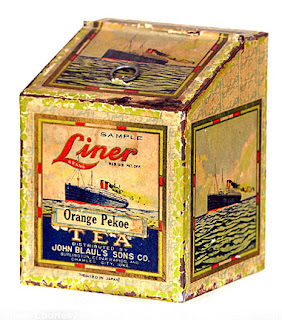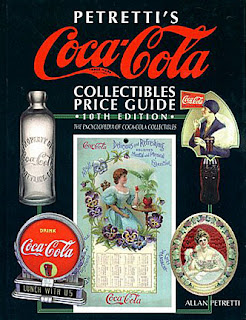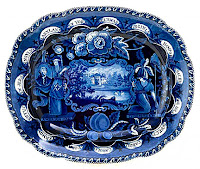 QUESTION: A few years ago, I visited one of those local historical museums which had a country store exhibit. I found the many containers with advertisements printed on them very interesting. I didn’t realize that advertising was so much in use in the 19th century. Since then, I’ve purchased a number of items sporting advertisements for the companies that made them. I’d really like to know the origin of advertising and the range of objects I have to chose from for my collection.
QUESTION: A few years ago, I visited one of those local historical museums which had a country store exhibit. I found the many containers with advertisements printed on them very interesting. I didn’t realize that advertising was so much in use in the 19th century. Since then, I’ve purchased a number of items sporting advertisements for the companies that made them. I’d really like to know the origin of advertising and the range of objects I have to chose from for my collection.
ANSWER: “Advertiques,” or objects with some sort of advertising, are popular with collectors. It’s not unusual for collectors to pay big bucks for some of the larger and rarer items. And the variety of objects available is great, enabling collectors of every financial level to assemble a fine collection.
Manufacturers in the 19th century couldn’t resist employing useful items to promote their products, for at the time, promoting products was the key, unlike today where promoting the benefits to consumer is more the style. String holders, ashtrays, fans—all served as a promotional medium.
 Advertising wasn’t limited to just trade cards, posters, and signs, originally used to advertise a business. Objects, like coffee mills, flour and coffee bins, and gum and candy machines, on the other hand, promoted a product. All were necessary to the functioning grocery or dry goods store of the late-19th and early 20th centuries.
Advertising wasn’t limited to just trade cards, posters, and signs, originally used to advertise a business. Objects, like coffee mills, flour and coffee bins, and gum and candy machines, on the other hand, promoted a product. All were necessary to the functioning grocery or dry goods store of the late-19th and early 20th centuries.
One reason collectors like these “advertiques” is that advertising is a vital part of doing business today. With other types of antiques, both the object and its function are now obsolete. But the advertising techniques used by business have changed very little since the late 19th century. Posters, free samples, and mass advertising are still in as much use today as they were over 125 years ago.
One of the most widely collected form of promotion was the advertising poster. These first appeared in the late 18th century as black-and-white woodcuts. But the introduction of lithography in the 1850s led to a proliferation of brightly colored tin and paper posters.
While most people probably couldn’t recall any 19th-century advertising poster, there’s one that older people still remember from their childhood—the circus poster. Color lithography helped to spread the news of upcoming shows across the country.
Trade cards were miniature versions of advertising posters. Business owners paid small boys a few pennies to hand these out to passersby. These cards urged to recipient to a product, such as a cologne, or a patent medicine, or directed him or her to a specific store that sold the product.
 Every grocery store had a least one coffee mill in which to ground roasted beans. Some of these cast-iron behemoths stood as tall as four feet, were handpainted in bright colors, and often bore the name of a particular brand of coffee. Today, the Coca Cola, vending machine, with the name “Coca Cola” emblazoned on its facade, does much the same sort of promotion.
Every grocery store had a least one coffee mill in which to ground roasted beans. Some of these cast-iron behemoths stood as tall as four feet, were handpainted in bright colors, and often bore the name of a particular brand of coffee. Today, the Coca Cola, vending machine, with the name “Coca Cola” emblazoned on its facade, does much the same sort of promotion.
And many store owners didn’t forget about their customer’s children. An array of gum, nut, and candy machines, with brand names such as Baby Grand and Delicious, gave the little ones something to do with their pennies.
 Wholesalers provided store owners with bins to hold flour, tea, and coffee—all featuring the brand name of a the product. One of the most popular with collectors were the sturdy oak cabinets that displayed Diamond Dyes and Coats Spool Thread. Coffee and tin bins, usually made of tin, featured colorful lithographed decoration, featuring everything from exotic locales to American warships. There were other dispensers, also. Wooden boxes with colorful lithographed labels held biscuits.
Wholesalers provided store owners with bins to hold flour, tea, and coffee—all featuring the brand name of a the product. One of the most popular with collectors were the sturdy oak cabinets that displayed Diamond Dyes and Coats Spool Thread. Coffee and tin bins, usually made of tin, featured colorful lithographed decoration, featuring everything from exotic locales to American warships. There were other dispensers, also. Wooden boxes with colorful lithographed labels held biscuits.
 All of these objects bore an advertiser’s message. The blackboard that displayed the daily prices for eggs and butter came from a wholesaler, as did the string dispenser used to wrap meats at the meat counter. There were also match safes, calendars, and even thermometers—all with bearing an advertiser’s name.
All of these objects bore an advertiser’s message. The blackboard that displayed the daily prices for eggs and butter came from a wholesaler, as did the string dispenser used to wrap meats at the meat counter. There were also match safes, calendars, and even thermometers—all with bearing an advertiser’s name.
Some items had practical uses, such as serving and tip trays. Most brewers had metal trays made to serve beverages in taverns and soda fountains. Collectors today seek them out for their colorful graphics and sentimental renditions of popular scenes.
To promote hair and beauty care products, manufacturers gave away tiny tin-and-glass mirrors, each bearing an advertiser’s message. They often featured the likenesses of famous stage actors and later movie stars.
 While not as common as tin or paper promotional items, pottery advertising memorabilia, such as stoneware jugs were also popular. Jugs bearing the name of a distiller or brewery or a soda like Hires Root Beer are favorites with collectors. Cereal bowls promoting Cream of Wheat feature images of the famous 20th-Century Limited train while sets of dishes promoted Buster Brown Shoes.
While not as common as tin or paper promotional items, pottery advertising memorabilia, such as stoneware jugs were also popular. Jugs bearing the name of a distiller or brewery or a soda like Hires Root Beer are favorites with collectors. Cereal bowls promoting Cream of Wheat feature images of the famous 20th-Century Limited train while sets of dishes promoted Buster Brown Shoes.
No area of collecting is so passionate about condition as that of advertiques. Collectors shy away from rusted tine containers and water-stained paper goods. These collectibles need to be in pristine shape to be worth anything at all
To read more articles on antiques, please visit the Antiques Articles section of my Web site. And to stay up to the minute on antiques and collectibles, please join the over 30,000 readers by following my free online magazine, #TheAntiquesAlmanac. Learn more about "folk art" in the 2023 Winter Edition, online now. And to read daily posts about unique objects from the past and their histories, like the #Antiques and More Collection on Facebook.





















